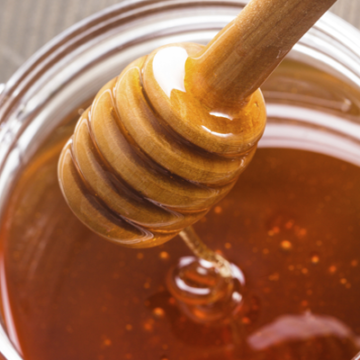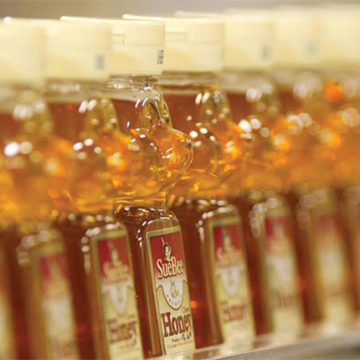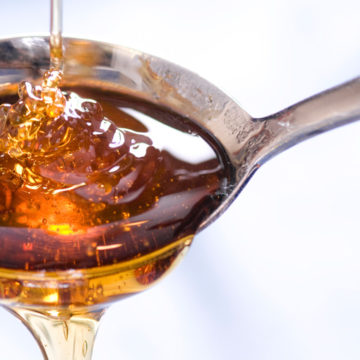How should I store honey?
Honey does not spoil. However, the flavor is best when consumed before the ‘Best by’ date on the cap. It will keep indefinitely if stored in a sealed container and is best stored at room temperature. Refrigeration preserves honey very well but also promotes granulation, yielding a semi-solid mass. Freezing, on the other hand, preserves honey well and does not promote granulation, but makes dispensing difficult. Avoid temperatures above room temperature since they promote the darkening of the honey, along with subtle flavor changes.
If granulation – a natural characteristic of pure honey, which does not harm it or indicate any deterioration of the honey – occurs, it can easily be reversed without harming the honey. Here’s how:
1. Bring a pan of water to near boil.
2. Turn off the heat.
3. Place the container with cap open into the water.
4. Leave until both have cooled.
5. Repeat as necessary until honey reaches desired consistency.
Another thing you may try to prevent granulation is this: If you are buying in large containers that granulate before you are done with them, pour a manageable amount into a smaller “table server” for your table. Store the remainder in the large container in your freezer. Freezer temperatures are too low for glucose molecules to migrate and form crystals. As the table server empties, remove the large container from the freezer long enough for it to warm so you can refill the smaller container. Replace the large container in the freezer. Note: Before you pour more honey into your table server be certain that no crystals remain there to act as ‘seed’ for the new honey to granulate around, a condition which will speed up granulation.
While microwaving your honey may seem like an easier alternative, it is not advisable. Most honey containers are made of PET (polyethylene terephthalate), a clear plastic that allows the consumer to see the honey before purchase. One of its characteristics, however, is warping at near boiling temperatures. Also, some labels are a foil and paper material. The foil, like metal cooking utensils, does create excessive heat problems in a microwave.
Also, honey, being a thick, viscous liquid, does not heat evenly in a microwave. Hotspots may develop that may lead to a sudden boil that spatters the hot contents. Such hotspots are also hot enough to degrade the flavor and color of this premium honey.



